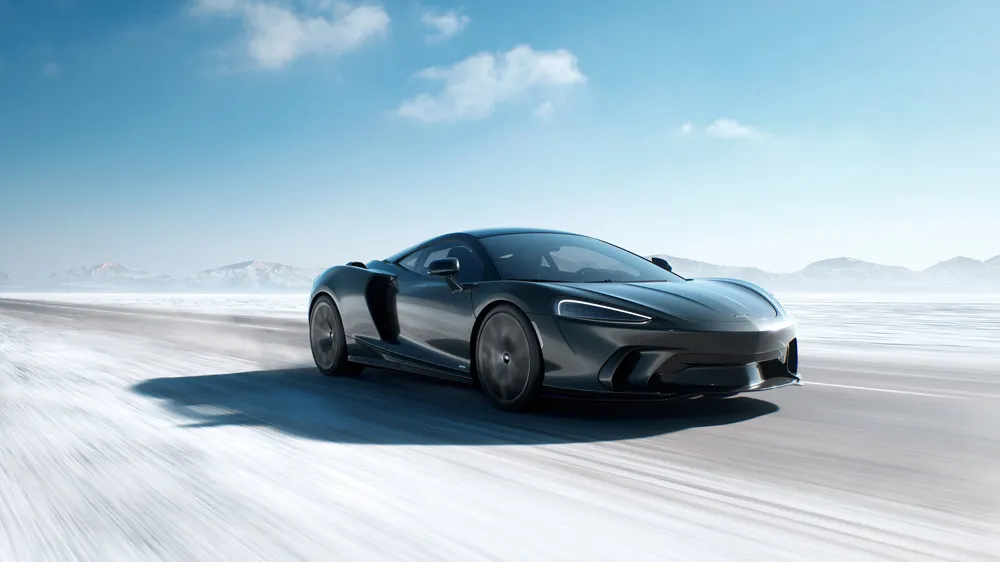This year holds significant importance for McLaren, marking its 60th anniversary in motorsport—a celebration extending to McLaren Automotive and its line of road-going supercars. Back in April, the British automaker unveiled the 750S, succeeding its renowned 720S model, which clinched second place in Robb Report’s 2018 Car of the Year contest. Now, McLaren has introduced the GTS, a refined iteration of its GT model first revealed in 2019.
Originally intended as McLaren’s closest approach to a daily driver while retaining the brand’s trademark style and performance, the initial GT fell slightly short of its objectives, as per the consensus of Robb Report’s 2021 Car of the Year judges, ranking ninth among 11 cars. However, our perspective then suggested an inherent potential for improvement: “While the current GT may not match its smaller siblings, room for enhancement has been purposefully embedded.” This is where the GTS steps in.

Michael Leiters, CEO of McLaren Automotive, expressed, “The new McLaren GTS offers an unparalleled fusion of McLaren driving dynamics and performance, coupled with refinement and practicality.” He highlighted its ability to deliver a genuine supercar driving experience while also being an ideal companion for leisurely extended journeys or weekend getaways requiring luggage.
Presently, the rear-wheel-drive GTS—incorporating a roof panel crafted from recycled carbon fiber—appears to embody a blend of subtle updates, mainly aesthetic, without major overhauls. It retains the same carbon-fiber Monocell II-T monocoque chassis as the GT, shared with McLaren’s Ultimate series’ Speedtail. Cargo space, comparatively ample in relation to other models, remains unchanged at 20.1 cubic feet. Noteworthy, however, is the modest increase in output from the 4.0-liter twin-turbo V-8, now delivering an extra 14 hp for a total of 626 hp, while maintaining the same 465 ft lbs of torque.

Weighing 3,351 pounds, the GTS is 22 pounds lighter than the GT. Equipped with a seven-speed seamless-shift gearbox (SSG) in its powertrain, it accelerates from zero to 60 mph in 3.1 seconds and reaches a top speed of 203 mph—figures identical to its predecessor. However, it surpasses the GT in accelerating from zero to 124 mph in 8.9 seconds, shaving off 0.1 seconds. Additionally, with 380 mm and 390 mm carbon-ceramic brake discs at the front and rear, respectively, the GTS decelerates from 124 mph to zero in 417 feet.
Enhancing its performance further is the vehicle’s nose-lift feature, maintaining 5.1 inches of ground clearance similar to the GT but claimed to operate “in half the time.”
Regarding aesthetics, McLaren has fashioned the GTS to exude a more “aggressive” appearance. Retaining McLaren’s organic design language, it distinguishes itself from the GT with a new front bumper, expanded intakes at the front, and “taller air scoops” on the rear fender. Fresh paint choices, including Mantis Green, Ice White, Tanzanite Blue, and the exclusive Lava Grey, complement the model. The GTS will sport standard 10-twin-spoke forged alloy wheels, with a lighter 10-spoke Turbine design available—all wrapped in custom Pirelli P Zero tires.
Inside, a 10.25-inch digital dash accompanied by a 7-inch central touchscreen dominates the interior. The option to upgrade to a 12-speaker Bowers & Wilkins sound system exists. The cockpit’s trim packages—Performance and TechLux—cater to distinct tastes: “sporty, sharp, and technical,” or “classical elegance,” as described by McLaren.
Set to commence deliveries in 2024, the GTS’s performance against its sibling, the Artura, will be closely observed. The Artura, McLaren’s inaugural production-series hybrid featuring a V-6 engine, stands as a contender in Robb Report’s 2024 Car of the Year, with results showcased in the upcoming February issue.





